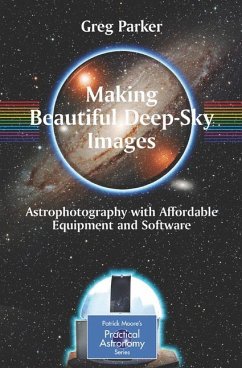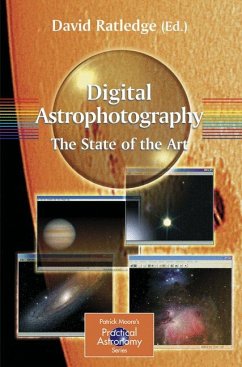
Imaging Our Solar System: The Evolution of Space Mission Cameras and Instruments (eBook, PDF)
Versandkostenfrei!
Sofort per Download lieferbar
30,95 €
inkl. MwSt.
Weitere Ausgaben:

PAYBACK Punkte
15 °P sammeln!
As we speak, stunning new snapshots of our Solar System are being transmitted to Earth by a fleet of space probes, landers, and rovers. Yet nowadays, it is all too easy to take such images for granted amidst the deluge of competing visuals we scroll through every day. To truly understand the value of these incredible space photos, we first need to understand the tools that made them possible.This is the story of imaging instruments in space, detailing all the technological missteps and marvels that have allowed us to view planetary bodies like never before. From the rudimentary cameras launche...
As we speak, stunning new snapshots of our Solar System are being transmitted to Earth by a fleet of space probes, landers, and rovers. Yet nowadays, it is all too easy to take such images for granted amidst the deluge of competing visuals we scroll through every day. To truly understand the value of these incredible space photos, we first need to understand the tools that made them possible.
This is the story of imaging instruments in space, detailing all the technological missteps and marvels that have allowed us to view planetary bodies like never before. From the rudimentary cameras launched in the 1950's to the cutting-edge imaging instruments onboard the Mars Perseverance rover, this book covers more than 100 imaging systems sent aboard various spacecraft to explore near and distant planetary bodies.
Featured within are some of the most striking images ever received by these pioneering instruments, including Voyager's Pale Blue Dot, Apollo's Blue Marble, Venera's images from the surface of Venus, Huygens' images of Titan, New Horizon's images of Pluto and Arrokoth, and much more. Along the way, you will learn about advancements in data transmission, digitization, citizen science, and other fields that revolutionized space imaging, helping us peer farther and more clearly across the Solar System.
This is the story of imaging instruments in space, detailing all the technological missteps and marvels that have allowed us to view planetary bodies like never before. From the rudimentary cameras launched in the 1950's to the cutting-edge imaging instruments onboard the Mars Perseverance rover, this book covers more than 100 imaging systems sent aboard various spacecraft to explore near and distant planetary bodies.
Featured within are some of the most striking images ever received by these pioneering instruments, including Voyager's Pale Blue Dot, Apollo's Blue Marble, Venera's images from the surface of Venus, Huygens' images of Titan, New Horizon's images of Pluto and Arrokoth, and much more. Along the way, you will learn about advancements in data transmission, digitization, citizen science, and other fields that revolutionized space imaging, helping us peer farther and more clearly across the Solar System.
Dieser Download kann aus rechtlichen Gründen nur mit Rechnungsadresse in A, B, BG, CY, CZ, D, DK, EW, E, FIN, F, GR, HR, H, IRL, I, LT, L, LR, M, NL, PL, P, R, S, SLO, SK ausgeliefert werden.












